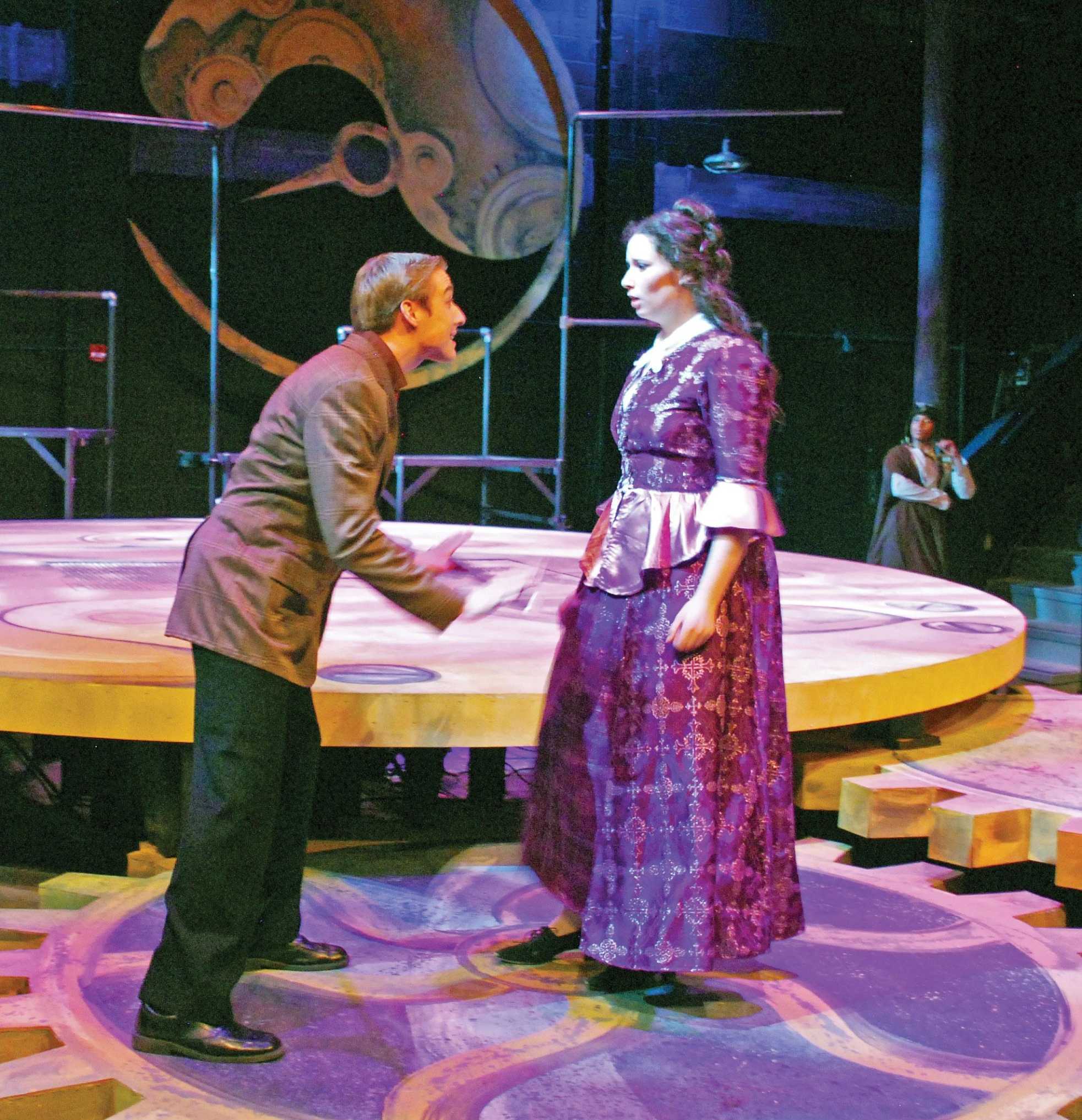As the usher pointed me to my seat, I have to admit I felt a little anxious. I was attending my very first Shakespeare play, “A Midsummer Night’s Dream,” and I was not sure what to expect.
I had obviously read several Shakespeare plays in high school, but reading Shakespeare and watching Shakespeare were two completely different animals. I even knew this despite never having seen a Shakespeare performance before. I was worried I would not understand the archaic dialogue, and there was not a handy computer nearby to hastily read some No Fear Shakespeare. So anxiously, I waited for the performance to begin.
While I waited, I tried to make sense of the set in front of me. I had never seen “A Midsummer Night’s Dream” before, but I was still surprised to see the set designed in such a fashion. The only previous knowledge I had was the play largely took place in a forest, but the set before me could scarcely resemble anything less. The set looked incredibly industrial, and it was made up of a series of colorful platforms that looked like gears, which were surrounded by metal scaffolding on different levels. I also noticed a trap door in the middle of the largest platform, much to my dismay. I could already imagine myself nearly jumping out of my seat whenever it banged open. Spoiler alert: that is exactly what happened each and every time it was used. After peering thoughtfully at the set, I was no closer to understanding than I was when I sat down.
The play began shortly after I was seated, and I was even more flummoxed as actors graced the stage in costumes which, to me, looked very old-fashioned. In fact, the word that came to mind was actually Victorian, but I was afraid I was thinking of the wrong time period.
Thankfully, there was an incredibly helpful paragraph in the program explaining the dramaturge’s vision which cleared up my confusion. For the West Chester production of “A Midsummer Night’s Dream,” the production crew wanted to do something different – so they altered the setting so that it was a steampunk story that took place in Victorian London. For anyone who does not know what “steampunk” is, it is a sub-genre of sci-fi that usually includes steam-powered machinery – hence, the industrial set comprised largely of gears and Victorian costumes. Finally, everything started to make sense.
Now, I said I was afraid that I was not going to understand the dialogue – so let me just take a moment to point out very sarcastically that becoming engrossed in the paragraph in the program about steampunk and not paying any attention whatsoever to the play itself for the first ten minutes really helped me connect with the opening scene. But lo and behold, I actually managed to get a general gist of things within the first half hour, so I was clearly overreacting. The thing about Shakespeare, whether the person is reading or listening, is that understanding it is an adjustment. At least for me, I can get the hang of understanding iambic pentameter eventually, but it will take me some time to do so.
I loved the play; I really did. I thought the steampunk vision was really courageous – because it could have gone horribly wrong – but it was worth the risk. It made West Chester’s production of “A Midsummer Night’s Dream” a memorable experience, especially for me. How many people can say their first Shakespeare play had a steampunk theme? The other thing that made the play so good was its perfectly chosen cast. The actors worked really well together, and I did not think that there was one actor who stole the show – which, in my book as a huge theater geek, is a good thing.
If I were going to go to see it again, one thing I would change is I would sit in the middle seating area, rather than on the side. The seating in the Main Stage Theater wraps around the stage, and having the actors’ backs to me combined with the Shakespeare language made parts of it hard to understand. The only other thing I would have changed about the night had nothing to do with the play itself. The next time I see a Shakespeare play, I will not walk in blindly without knowing the storyline; I missed a lot of details in the first act because of my ignorance and my distraction over the steampunk paragraph, so I used the ten-minute intermission to look up a synopsis on my phone, which really helped me in the second act.
Overall, I would definitely say the night was a success. I congratulate the theater department on producing such an innovative version of a well-known play, and I would recommend it to anyone who has even the smallest bit of interest. You will not regret it.
Clare Haggerty is a second-year student majoring in English. She can be reached at CH757342@wcupa.edu.

